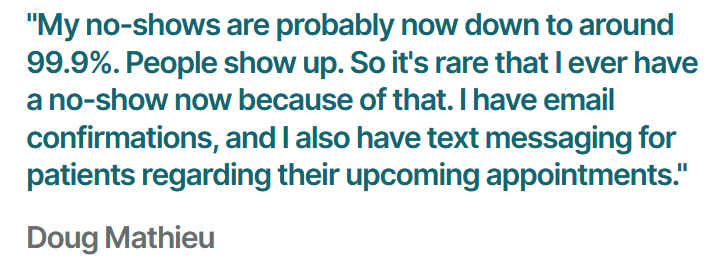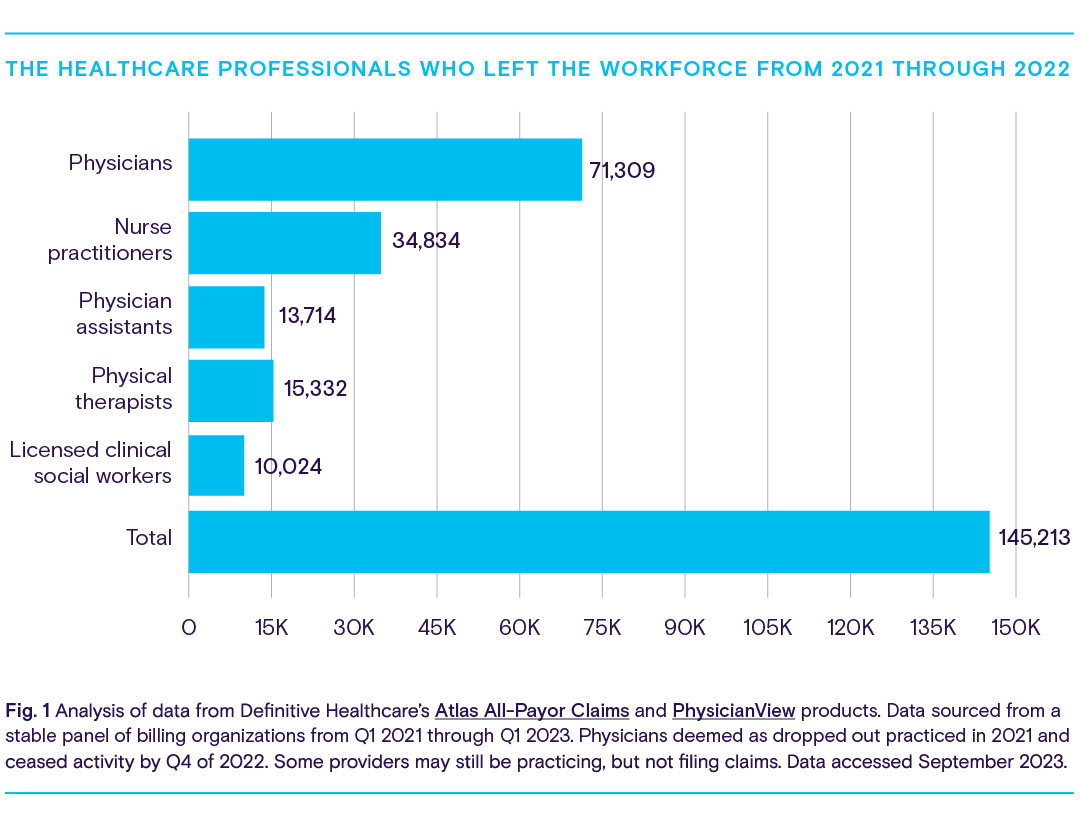Pricing Update & Annual Discounts:
Learn More
Table of Contents

Experience Better Practice Management Today!
Starting at $28.05/month
No Credit Card Required

Experience Better Practice Management Today!
Starting at $30/month
No Credit Card Required
While mistakes are inevitable, they can be exceptionally costly, especially when running a medical practice.
It's not just about patient care—it's about ensuring every aspect of your practice, from operations to finances, runs smoothly.
Yet, many practices stumble, not from a lack of expertise but due to operational oversights. In fact, 45% of small businesses, including medical practices, fail within the first five years due to poor planning and management.
The good news? These setbacks are preventable. By recognizing common pitfalls and making strategic adjustments, you can guide your practice toward sustainable growth.
In this blog, we'll explore 12 common mistakes that can derail clinics and medical practice growth strategies for avoiding them for long-term success.
Let's dive in!
In the following sections, we’ll explore common mistakes that hinder practice growth and provide actionable solutions to help you avoid or correct them.
Sitting down to create a detailed business plan can feel like a luxury you can't afford when knee-deep in patient care. However, your practice can quickly drift off course without a clear, comprehensive plan.
It’s easy to get caught up in the day-to-day without realizing that the practice isn’t growing as it should be.
It is more common than you might think—many practices have no idea where they’re headed, which makes it difficult to allocate resources properly or spot new growth opportunities.
Solution:
A well-structured business plan serves as your practice’s guide. It helps you set financial goals, outline marketing strategies, and anticipate staffing needs. This allows for smoother operations and proactive decision-making.
For example, if you notice patient visits dipping during certain hours, a solid plan lets you adjust your marketing or offer promotions to fill those gaps.
As your practice evolves, your business plan should too. That’s how you stay aligned with your growth objectives and keep everything running efficiently.
What should your business plan include?
Having these key elements in place allows you to steer your practice confidently and adjust to changing circumstances without losing sight of your long-term vision.
Financial mismanagement is one of the top reasons businesses fail, and medical practices are no exception. Many clinics underestimate operational expenses or fail to track cash flow, leading to revenue shortages.
According to the U.S. Bank study, 82% of businesses fail because of cash flow problems. This is often due to a lack of financial oversight, and in a healthcare setting, this can quickly escalate if not addressed.
Solution:
The key is to adopt a proactive approach to financial management. It’s not enough to rely on estimations—you need solid tools that track your income, expenses, and revenue projections.
This is where the clinic and practice management software Noterro comes into play. Its invoicing and financial management features help you track billing, keep up with payments, manage insurance billings, and a lot more.
With these tools in place, you can focus on how to grow a medical practice without constantly worrying about financial shortfalls.
Providing excellent medical care is essential, but today’s patients expect more—they want an engaging and personalized experience. In fact, 67% of patients and customers can leave a healthcare provider due to poor customer service.
Whether it’s long wait times, complicated booking processes, or a lack of follow-up, a subpar patient experience can quickly damage your reputation and lead to high patient turnover.
Solution:
Improving patient engagement is about offering a seamless and personalized experience at every touchpoint. This begins with scheduling.
Noterro’s patient engagement features, including online booking, appointment reminders, and patient portal, make it easy for patients to schedule, manage, and confirm their appointments.
These tools reduce no-shows and improve patient satisfaction by giving them the control and convenience they expect.
Additionally, you can send personalized follow-up messages and reminders, ensuring that patients feel cared for even outside the clinic. When patients feel valued, they’re more likely to remain loyal and recommend your practice to others.
Even if your services are top-notch, a poor clinic experience can drive patients away. Factors such as poor hygiene, outdated decor, or untrained staff can leave a negative impression, no matter the quality of care provided.
Solution:
The overall clinic experience should reflect the professionalism of your practice. Ensure your clinic is clean, welcoming, and aesthetically pleasing. Invest in staff training to ensure excellent customer service and create an environment where patients feel comfortable and valued.
The healthcare industry is rapidly evolving, and clinics that rely on outdated systems—whether it’s paper records or disjointed software—often struggle to keep up.
From appointment scheduling to patient record management, using inefficient tools can slow down your operations, frustrate your staff, and lead to costly errors.
One critical mistake is failing to monitor key performance indicators (KPIs) that reflect your clinic's overall health. Ignoring these can cause small issues to escalate into bigger problems. Some key KPIs to watch include:
Solution:
The solution lies in integrating a modern clinic management system like Noterro that can handle everything from patient records to billing, allowing you to streamline operations and focus on reducing errors in healthcare.
By integrating all aspects of your practice into one platform, your team can operate more efficiently, saving time and improving patient care.
Balance Integrative Health, a clinic that embraced Noterro, transformed its operations by automating administrative tasks and improving patient scheduling.
The result?
A smoother workflow, fewer scheduling errors, and a significant improvement in patient satisfaction. You can read their full success story here.

Your staff is the backbone of your practice. Yet, many clinics fail to prioritize hiring and staff retention. According to a report, the turnover rate for registered nurses (RNs) in hospitals increased by 2.8% in 2020, reaching 18.7%.
High turnover disrupts the patient experience, increases the workload for remaining staff, and negatively affects your clinic’s reputation. Moreover, it’s not just about finding replacements—it’s about finding the right people who align with your clinic’s values.
Solution:
Prioritize hiring by not only seeking out the best talent but also investing in ongoing staff training and development. Noterro’s practitioner management features help you monitor staff performance, schedule shifts, and track productivity.
This allows you to ensure that your team remains motivated and aligned with your practice’s goals.
Additionally, fostering a positive work environment where staff feel valued and supported will encourage loyalty and reduce turnover rates. Your patients will notice the difference when your staff is engaged and well-supported.
In today’s digital age, relying solely on word-of-mouth or traditional marketing strategies isn’t enough.

Many clinics don’t realize the impact of digital marketing on patient acquisition. According to The Intake survey, 77% of patients search for healthcare providers online, and 72% of them read reviews before making a decision.
Without a strong online presence, your clinic is likely missing out on potential patients.
Solution:
What you need to tackle this curveball is a strong digital marketing strategy.
Expanding your clinic sounds like a great idea—until you realize your operational framework can’t handle the added complexity.
Without proper planning, you risk overwhelming your staff, which is especially dangerous in an industry already facing staffing shortages. Overworked staff are more likely to burn out, leading to high turnover rates and compromising patient care.

More so, rapid expansion can frustrate patients and drain resources out of the business. In fact, 42% of healthcare providers report struggling with scaling their practices due to poor operational planning (Becker’s Hospital Review).
Solution:
Growth should be sustainable, not rushed. Before expanding, ensure that your internal processes are scalable.
Start by assessing your current staff capacity and making sure you have enough team members to handle increased patient volumes without overworking them. You don't want to end up short-staffed, as this could lead to longer wait times, frustrated patients, and even staff resignations.
If you’re expanding to a new location, Noterro’s multi-location clinic management features allow you to easily add users, expand to new locations, and keep operations consistent across all sites.
This means you can grow your practice without sacrificing quality or efficiency. With a scalable system in place, you’ll be able to handle the increased demand without burning out your staff or compromising patient care.
While attracting new patients is important, neglecting your existing patient base is a costly mistake. It’s up to 25 times more expensive to acquire a new patient than to retain an existing one, according to Harvard Business Review.
When you focus too much on attracting new patients, you risk alienating those who already trust you.
Solution:
Building a patient retention strategy is essential for long-term growth. It includes everything from loyalty programs to personalized follow-ups and automated engagement strategies to ensure your patients feel valued.
Engaged patients are more likely to return and recommend your practice to others, fostering growth through retention rather than constant acquisition efforts.
It's impossible to grow what you don't measure. Yet, many clinics operate without tracking key performance indicators (KPIs) like patient satisfaction, staff productivity, or revenue per visit.
Clinics that overlook KPIs often fail to notice warning signs, like declining patient satisfaction or overworked staff, until it's too late. It can lead to high patient churn, staff burnout, and, ultimately, lost revenue.
For example, you might miss recurring complaints about long wait times or rushed appointments if you're not monitoring patient satisfaction. These problems, if left unaddressed, can frustrate patients and cause them to seek care elsewhere.
Similarly, if you're not tracking staff productivity, you might not realize your team is stretched too thin, which leads to inefficiency and burnout. It could result in high staff turnover, which is costly and time-consuming.
Solution:
Implement a system that tracks relevant KPIs and provides actionable insights. Noterro's reporting and analytics tools offer real-time data on your clinic's operations, from patient satisfaction scores to financial performance.
For example, if patient satisfaction dips due to long wait times, you can adjust scheduling or add more staff. Monitoring staff productivity helps prevent burnout by revealing if your team is stretched too thin. Tracking financial KPIs lets you focus on your most profitable services.
Choosing a location without researching the local market can lead to failure. If there's insufficient demand for your services or the area is oversaturated with similar clinics, your practice may struggle to attract patients.
Solution:
You should conduct thorough market research before selecting a location. For example, if you're opening a massage therapy clinic, research how many similar businesses already exist and how they're performing. If the market is crowded, you might struggle to stand out, especially if the competition has established a loyal customer base.
However, if you identify a location with an unmet need, you're setting yourself up for success. Let's say you find a neighborhood with a high demand for massage therapy but with a few options available. This could be a golden opportunity to establish your clinic and attract a steady stream of patients.
Networking with other healthcare providers is often overlooked, but it’s an effective way to grow your practice. Without a solid referral network, you miss out on potential patients who could benefit from your services.
For example, a physiotherapy clinic that doesn’t connect with local doctors or chiropractors misses out on patients who could be referred for specialized treatment. Without a strong referral network, you limit your patient base and growth potential.
Solution:
Develop relationships with other practitioners and clinics to build a referral network. Collaborate with professionals in complementary fields—such as physical therapists partnering with orthopedic surgeons—to exchange referrals.
It increases patient flow and enhances your clinic's visibility and trust within the healthcare community. Networking opens doors to steady growth and stronger relationships.
Running a successful medical practice requires more than just excellent patient care—it takes strategic planning, efficient operations, and the right tools to drive growth.
By steering clear of these common mistakes and implementing medical practice growth strategies, you can build a practice that’s not only efficient but poised for long-term growth.
With tools like Noterro's clinic management software, you can streamline day-to-day operations, improve patient care, and focus on reducing errors in healthcare, creating a scalable business model.
Growing a medical practice isn't just about attracting new patients; it's about maintaining operational excellence and patient satisfaction.
Ready to take the next step? Let Noterro support your practice to success.
How can I improve patient retention in my clinic?
Focus on personalized care, follow-up communication, and loyalty programs. Tools like automated reminders and patient portals also enhance engagement.
How can clinic management software help improve operational efficiency?
Clinic management software automates scheduling, billing, and patient records, reducing errors and saving time, allowing your team to focus on patient care.
What are the most common mistakes that clinics make during their growth phase?
Common mistakes include poor financial planning, inadequate patient engagement, failing to track KPIs, and not utilizing modern technology effectively.
What should I consider when expanding my clinic to multiple locations?
Ensure scalable systems are in place, maintain consistent operations, and research demand in new areas to avoid overstretching resources.
Tags



